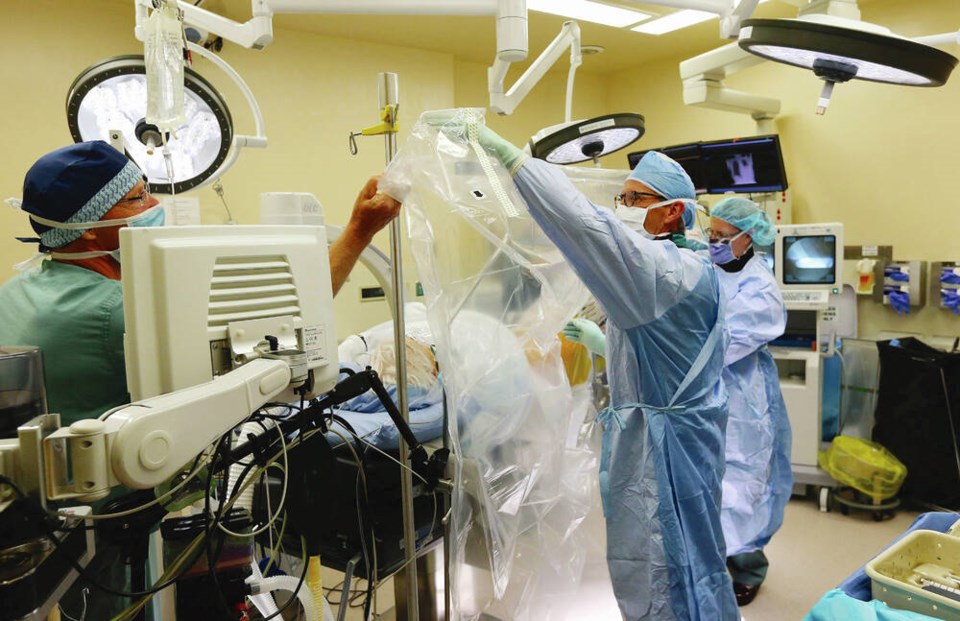On Wednesday, Feb. 16, my life took a turn. I was hiking on Seymour Hill at Thetis Lake with three friends when I took a bad fall.
My right foot slipped on a muddy spot, and I came down all in a heap. It was evident that something had gone seriously wrong with my right leg; later we learned that the tendons joining the quadriceps muscle to the kneecap were torn, and I was unable to stand up, let alone walk.
Then, a bit of good luck. A young woman came along the trail with her Labrador retriever, and she happened to be a firefighter from Colwood.
She looked at the damage and agreed it was impressive. More importantly, she knew how to quickly contact the View Royal Fire Rescue Team, and before long she was guiding a squad of them, and a couple of ambulance folks, to us.
The rescue team was impressive. Together, the Fire Rescue and ambulance service people, four men and two women total, put me in a large basket with a rubber tire and proceeded to get my carcass down the hill.
The going was extremely rough, and they were sweating bullets, but for me it was a pleasant ride all the way. As soon as we reached the bottom, we were on our way to Victoria General Hospital. The ambulance attendant spent the trip teaching a young trainee about the business, using me as a training subject.
I soon got to see an orthopedic surgeon, who assessed the damage and recommended surgery as soon as possible to avoid further deterioration. He thought he might have time tomorrow.
And, sure enough, at 9 p.m. came the call from the hospital, offering surgery the next day. The next morning at 11 a.m. preparation for surgery commenced, performed by a group of friendly, seemingly highly competent professionals, mostly young women.
At 1:45, I was taken to the operating area. Over the next half hour, the anesthesiologist, the surgeon and one of the OR nurses came to talk to me. I felt I was being treated like a human.
The last thing I remember was the surgeon asking me: “Where are we operating today?”, me pointing to my right knee, and him saying: “I need you to say it.”
I signed off on that, and next thing, I was in recovery, being watched and fussed over by a friendly Norwegian lady, who was busily assessing vital signs and deciding when I was ready for the next step of release.
When that came, I was put in the care of a young woman who spent about 45 minutes determining that I had gained enough stability to go home. Then, it was off to the front door where my daughter picked me up and delivered me home, with a right leg entirely immobilized in a splint.
It’s going to be a long time before I can do any long walks or work out on the rowing machine. But I just want to say how impressed I was by the rescue and hospital folks.
I think we have a good system in place to deal with this kind of misfortune. Of course, I haven’t paid a dime. I showed my health-care card to one or two people on Wednesday, and then didn’t need it again.
I realize that not everything is working well in our medical care system — we need better primary care access, and shorter turnarounds for elective surgery.
But when it comes to high-level care, we do things well, and we should all be pleased and grateful for that.



